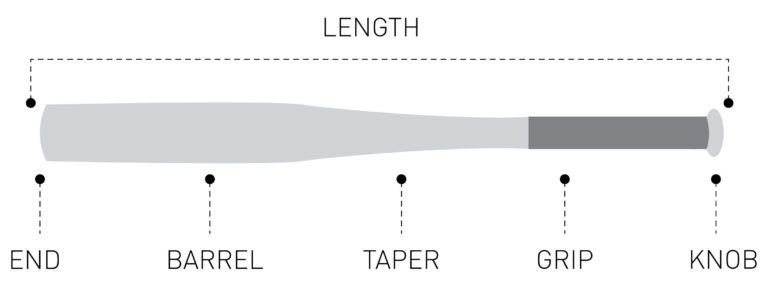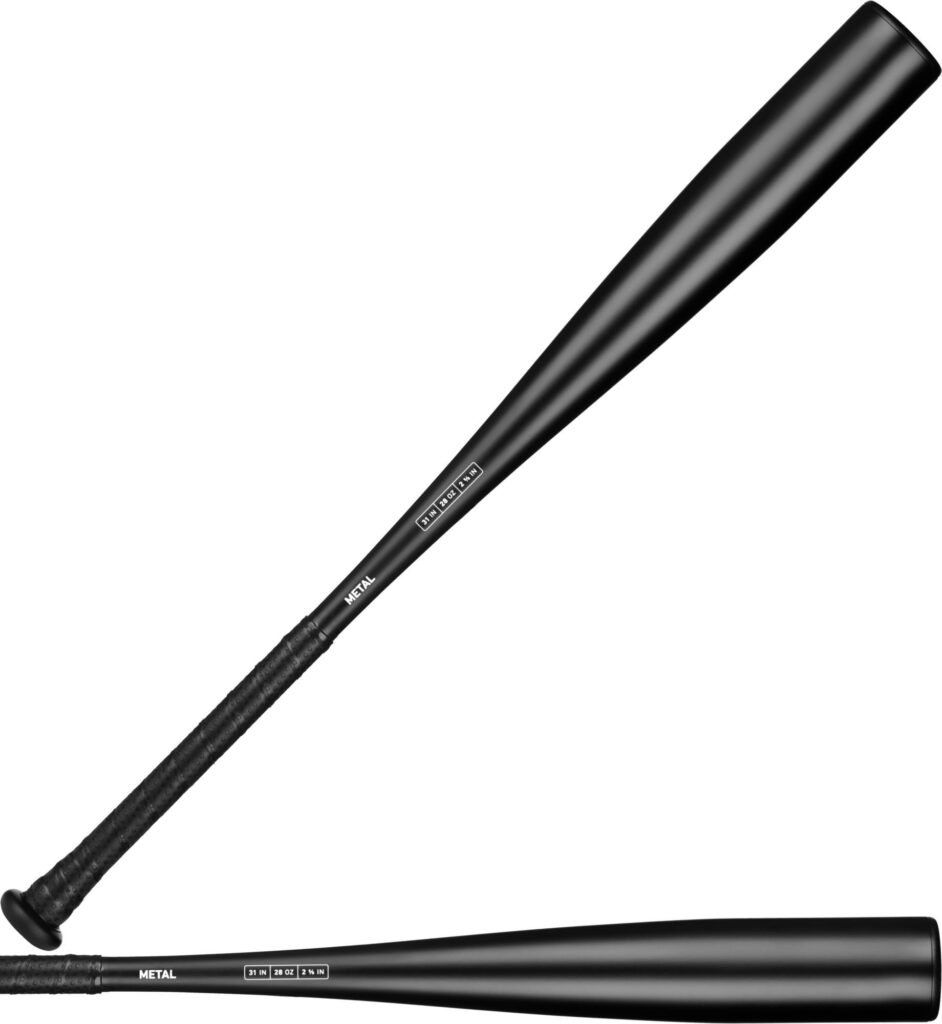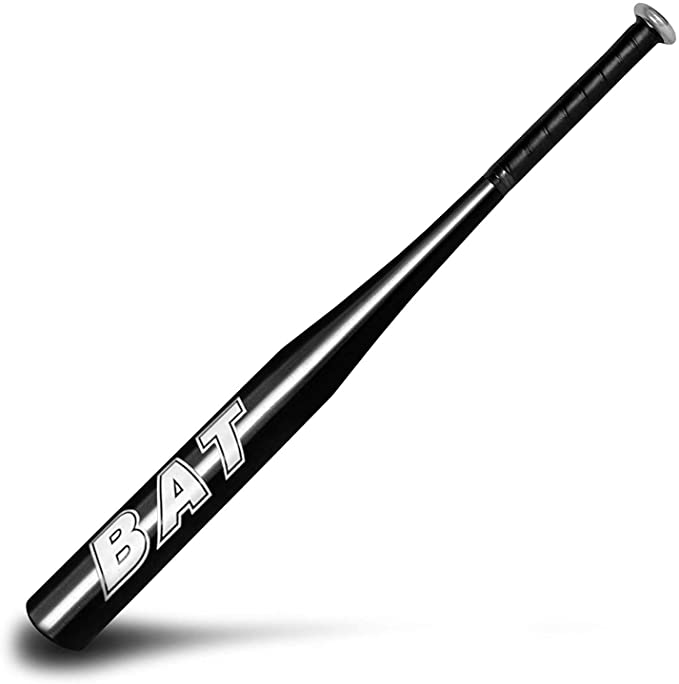What Does -10 Mean on a Softball bat?(Crack the Code!)
- April 19, 2023
- 2
Curious about What does -10 mean on a softball bat? It’s actually a term that refers to the bat’s weight-to-length ratio, which is an important specification that can
Curious about What does -10 mean on a softball bat? It’s actually a term that refers to the bat’s weight-to-length ratio, which is an important specification that can

Curious about What does -10 mean on a softball bat? It’s actually a term that refers to the bat’s weight-to-length ratio, which is an important specification that can significantly impact your performance on the field. Softball bats are designed with specific weight-to-length ratios to suit different players’ preferences and playing styles. But what does it really mean, and how does it impact your game?
In this article, we will decode the meaning behind “-10” on a softball bat and provide you with valuable insights on how it affects your performance. So, read on to uncover the secrets and gain a deeper understanding of this important aspect of softball bats. Stick with us till the end to unlock the mystery and learn all you need to know about this intriguing code!

The term “-10” on a softball bat refers to the bat’s weight-to-length ratio, which indicates the difference between the length of the bat and its weight in ounces. For example, a bat with a length of 30 inches and a weight of 20 ounces would be labeled as “-10”.
This ratio affects the bat’s overall weight and swing speed, with a higher negative number indicating a lighter bat. A “-10” bat is lighter compared to the length, making it easier to swing and generate faster bat speed.
It is a common specification used by manufacturers to help players choose a bat that suits their playing style and preferences. Understanding the meaning behind “negative numbers” can be crucial in selecting the right softball bat for optimal performance on the field. So, read on to gain a deeper understanding of this code and how it impacts your softball game!
If you’ve ever taken a closer look at a softball bat, you may have been intrigued by the cryptic numbers printed on it. These numbers are not just random digits; they hold the key to unlocking fascinating insights into the bat’s characteristics and performance.

One of the pivotal numbers you’ll encounter on a softball bat is the weight-to-length ratio, often denoted with a negative sign followed by a number, such as “-11.” This numerical value signifies the disparity between the bat’s length in inches and its weight in ounces.
For instance, a bat labeled as “-10” with a length of 30 inches would weigh a mere 20 ounces. This weight-to-length ratio plays a crucial role in determining the bat’s overall weight, swing speed, and on-field performance.
The magnitude of the negative number, such as “-10,” can unravel intriguing insights into the bat’s weight relative to its length. A higher negative number suggests a lighter bat in relation to its length, which can translate to faster bat speed, increased power, and greater distance in hitting.
Conversely, a lower negative number, such as “-8” or “-5,” indicates a relatively heavier bat. While heavier bats may offer more power, they may also require more effort to swing, resulting in slower bat speed.

Apart from the weight-to-length ratio, you may also come across other numbers that shed light on the bat’s construction and material. For example, you may find numbers indicating the type of material used, such as “100% alloy” or “composite”.
These numbers provide insights into the bat’s durability, flexibility, and trampoline effect, all of which can impact its performance on the field. Understanding these nuances can help you choose a bat that aligns with your playing style and preferences.
In addition to weight-to-length ratio and material, you may encounter numbers denoting certifications, such as “ASA,” “USSSA,” or “NSA.” These certifications signify that the bat meets the standards set by various softball associations.
Familiarizing yourself with these certifications can ensure that the bat is legal for use in specific leagues or competitions, and help you make an informed decision when selecting a softball bat that meets the required standards.
Armed with this knowledge, you can confidently choose a softball bat that aligns with your playing requirements and elevate your performance on the field. So, the next time you encounter those mysterious numbers on a softball bat, consider them as clues to unravel the secrets of its performance and crack the code for a rewarding playing experience.

Choosing the right bat can be a daunting task, as it can significantly impact your performance on the field. While there are various factors to consider while selecting a softball bat, one of the most critical decisions is choosing the right weight. The weight of your bat can influence your swing speed, power, and accuracy, making it crucial to find the perfect balance between a lighter or heavier bat.
So, the question arises – Is it better to have a lighter or heavier softball bat? Let’s delve into the nuances of both options to help you make an informed decision.
A lighter bat can offer several advantages, especially to players who prioritize bat speed and quick reaction time. A lighter bat enables you to swing it with more speed and agility, making it easier to hit the ball with accuracy and power.
Additionally, lighter bats can be easier to control, allowing you to make adjustments mid-swing and hit the ball where you intend to. Lighter bats can also reduce the strain on your hands, wrists, and arms, making them a suitable option for younger or less-experienced players.
On the other hand, a heavier bat can provide several benefits to players who prioritize power and hitting distance. A heavier bat can generate more momentum and force, translating to a harder and more impactful hit.
A heavier bat can also offer greater stability and control during the swing, preventing the bat from twisting or turning during contact with the ball. Heavier bats may also be a better option for experienced players who have built up their strength and can handle the added weight without strain or injury.
While both lighter and heavier bats have their pros and cons, choosing the right bat weight ultimately comes down to your individual preferences and playing style. Some factors to consider while selecting the ideal bat weight include your physical build, strength, skill level, and position on the field.
As a general rule, younger players or those with less strength may find lighter bats more suitable, while more experienced players with developed strength may prefer heavier bats. Additionally, the weight-to-length ratio of the bat can also impact its overall weight and performance.
The decision to choose a lighter or heavier softball bat depends on your personal preferences and playing style. While lighter bats can offer greater speed and agility, heavier bats can provide more power and stability.It’s essential to consider your physical attributes, skill level, and position on the field while selecting the ideal bat weight.
Experimenting with different weights and consulting with experienced players or coaches can also help you find the perfect softball bat weight that aligns with your playing requirements and elevates your on-field performance.
The negative number on a softball bat indicates its length-to-weight ratio, for example -10 is written on a bat which means the bat is ten ounces lighter than its length in inches. This can impact the bat’s overall weight, swing speed, and performance on the field.
Understanding the significance of -10 or any other negative umber on a softball bat can help you make an informed decision while selecting the right bat for your playing requirements. So, the next time you come across a softball bat with -10 written on it, you can confidently crack the code and choose the perfect bat to elevate your on-field performance.
Here are some common questions that baseball enthusiast asked related bats
2 Comments
[…] drop weight: With a -10 drop weight, this bat is slightly heavier than other youth baseball bats, which can help young players improve […]
[…] the opposing team from scoring runs and shifting the momentum in favor of the defensive side. The number of putouts accumulated by a player reflects their defensive abilities and can be used to evaluate […]